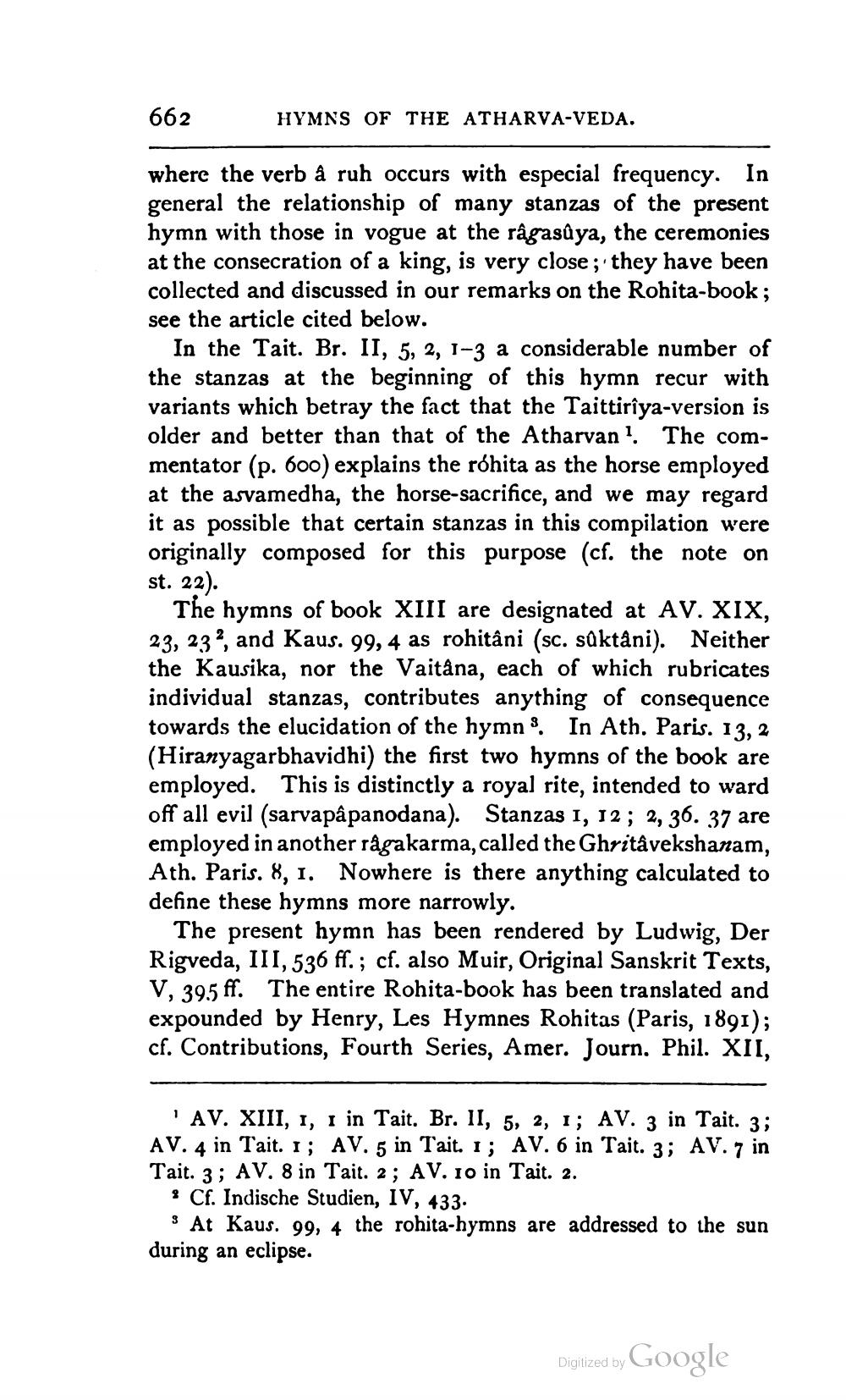________________
662
HYMNS OF THE ATHARVA-VEDA.
where the verb â ruh occurs with especial frequency. In general the relationship of many stanzas of the present hymn with those in vogue at the râgasûya, the ceremonies at the consecration of a king, is very close; they have been collected and discussed in our remarks on the Rohita-book; see the article cited below.
In the Tait. Br. II, 5, 2, 1-3 a considerable number of the stanzas at the beginning of this hymn recur with variants which betray the fact that the Taittirîya-version is older and better than that of the Atharvan1. The commentator (p. 600) explains the rohita as the horse employed at the asvamedha, the horse-sacrifice, and we may regard it as possible that certain stanzas in this compilation were originally composed for this purpose (cf. the note on st. 22).
The hymns of book XIII are designated at AV. XIX, 23, 232, and Kaus. 99, 4 as rohitâni (sc. sûktâni). Neither the Kausika, nor the Vaitâna, each of which rubricates individual stanzas, contributes anything of consequence towards the elucidation of the hymn. In Ath. Paris. 13, 2 (Hiranyagarbhavidhi) the first two hymns of the book are employed. This is distinctly a royal rite, intended to ward off all evil (sarvapâpanodana). Stanzas 1, 12; 2, 36. 37 are employed in another rågakarma, called the Ghritâvekshanam, Ath. Paris. 8, I. Nowhere is there anything calculated to define these hymns more narrowly.
The present hymn has been rendered by Ludwig, Der Rigveda, III, 536 ff.; cf. also Muir, Original Sanskrit Texts, V, 395 ff. The entire Rohita-book has been translated and expounded by Henry, Les Hymnes Rohitas (Paris, 1891); cf. Contributions, Fourth Series, Amer. Journ. Phil. XII,
AV. XIII, I, AV. 4 in Tait. I; Tait. 3; AV. 8 in Tait. 2; AV. 10 in Tait. 2.
Cf. Indische Studien, IV, 433.
At Kaus. 99, 4 the rohita-hymns are addressed to the sun during an eclipse.
I in Tait. Br. II, 5, 2, 1; AV. 3 in Tait. 3; AV. 5 in Tait. 1; AV. 6 in Tait. 3; AV. 7 in
Digitized by Google




